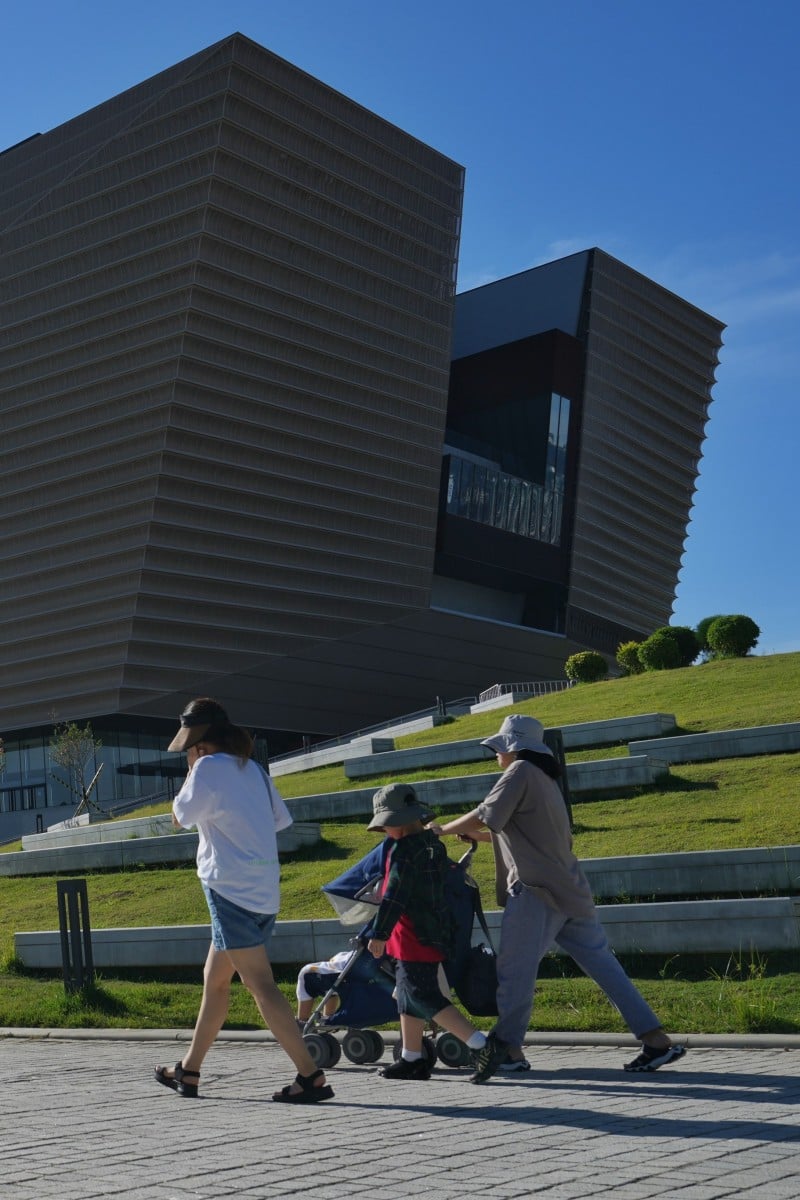
Face Off: Should all museums be free for everyone?
- Each week, two of our readers debate a hot topic in a showdown that doesn’t necessarily reflect their personal viewpoints
- This week, they discuss whether museums should charge admissions fees
 People walk along the path outside the Hong Kong Palace Museum at West Kowloon Cultural District. Photo: Elson Li
People walk along the path outside the Hong Kong Palace Museum at West Kowloon Cultural District. Photo: Elson LiIf you are interested in joining future Face Off debates, fill out this form to submit your application.
For: Anson Ng, 12, St Mary’s Canossian College
Museums play many different roles; not only are they educational, but they also provide entertainment and record our artistic, social, and scientific heritage. This is why all museums should be free for everyone.
Some people think education can only be gained through books and lessons, but museums also play a vital role in developing knowledge and character. They curate artefacts and works of art that people wouldn’t normally have a chance to see and may not have known existed, allowing them to expand their understanding of the world around them.
Hong Kong teens win award for role-playing game aimed at sparking youth engagement at Palace Museum
However, most museums in Hong Kong charge an entrance fee on days other than Wednesdays, which could deter people on a tight budget. Other educational institutions, like schools and public libraries, are free, so it makes sense that museums should be free too. Museums represent our shared history; if these stories belong to everyone, shouldn’t they be accessible to all?
Many Hongkongers live in poverty – statistics released in November 2021 state that one-fifth of the population lives below the poverty line. Many struggle to earn a living and afford daily necessities, and a museum ticket may feel totally out of budget. Making museums free would give people the cultural and educational opportunities they may not be able to afford and help them feel more connected to the city.
It could also help tourism; according to the Leisure and Cultural Services Department, museums have suffered from shrinking attendance over the last few years due in no small part to Covid-19 and the lack of visitors. For instance, attendance at the Hong Kong Museum of History dropped from 655,000 visitors in 2019/20 to 132,000 in 2020/21, rising slightly to 257,000 in 2021/2022. Even though attendance rose once the pandemic situation improved, there is still a long way to go to reach pre-Covid numbers.
Making museums free would attract more local visitors and tourists and line up with the government’s “Hello Hong Kong” campaign. It could also create jobs, as people could be hired as museum tour guides, safety guards and cleaners to keep up with increased attendance.
Making museums free would be an excellent long-term investment in education and the economy.
Will the ‘Hello Hong Kong’ campaign help revive tourism?
Against: Wong Hoi-yu, 13, St Paul’s Co-educational College
Museums preserve and interpret artefacts of mankind and the environment. Have you ever wondered why many museums charge entrance fees? The truth is that they need this money to keep things running; fees pay for utilities like electricity, employee salaries, and other maintenance that keeps the operation going.
Charging admission fees gives museums more resources to collect artefacts and exchange exhibits with other organisations, thereby giving visitors new and interesting things to see. These transactions involve complicated logistics and require insurance to ensure everything is transported safely and arrives intact, which can be costly.
Hong Kong’s Cup Noodles Museum gives visitors a chance to learn more about a beloved treat
Fees also help pay for security and prevent theft. A notorious criminal named Stéphane Breitwieser stole over 300 works from museums and cathedrals across Europe, worth an estimated US$2 billion. According to Breitwieser, he stole many of these pieces simply by taking advantage of a lack of museum security. Admission fees can pay for security cameras and sufficient staff to prevent these priceless artefacts from being stolen.
Furthermore, fees support the maintenance and upkeep of the items on display. From dinosaur bones to ancient pottery to Renaissance paintings, these relics must be properly cared for to survive. Using entrance fees, museums can establish or rent laboratories for preservation and restoration work. For example, the British Museum has a team devoted to conservation, providing advanced scientific equipment for the analysis, dating, and identification of materials. They help ensure these precious artefacts remain in top shape so future generations can see them.
In addition, many fees are indeed affordable, especially in Hong Kong. For instance, tickets for the Hong Kong Palace Museum cost HK$50 for a general adult ticket and HK$25 for students, seniors, and people with disabilities. This is a reasonble price, considering the works on display.
Admission fees help museums pay for their operations and create more informative, fulfilling visits. Fees also teach visitors the value of art and our shared cultural heritage. They are necessary to keep history alive.
